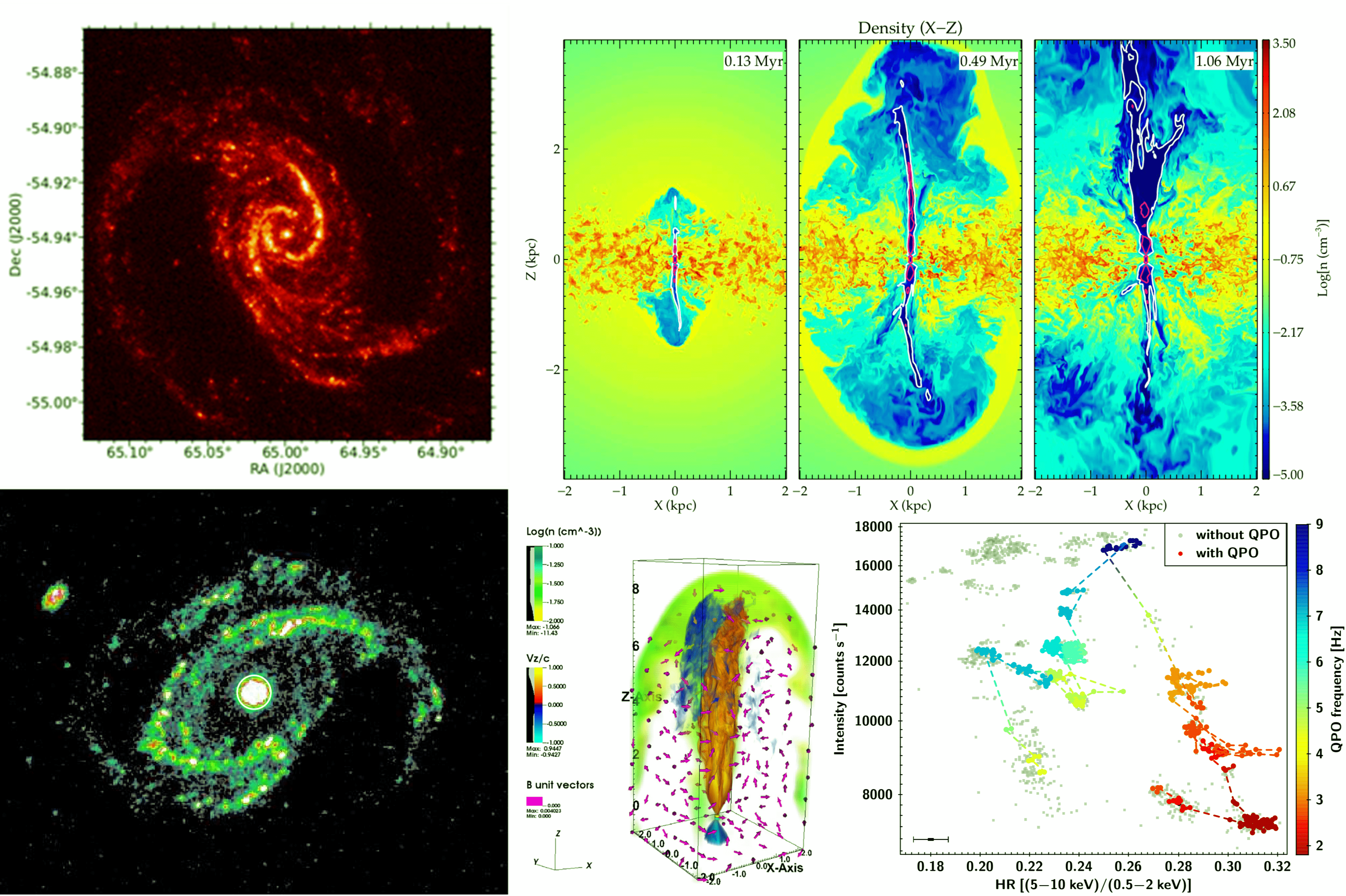High Energy Astrophysics
High Energy Astrophysics

- AGN: Active Galactic Nuclei (AGNs) are the most luminous sources in the Universe which emit across the entire electromagnetic wavelength from radio to gamma-ray. The bolometric luminosity of an AGN ranges from 10^42 to 10^47 erg s-1. A considerable fraction of this bolometric luminosity arises from the accretion disk in the optical/UV band and hot corona in the X-ray band. It is believed that the accretion disk emits thermal photons via accretion of matter from the host galaxy onto a central supermassive black hole. A fraction of these thermal photons then interact with the high-energy electrons of the corona and are up-scattered to the X-rays. The X-ray emission from the corona illuminates the accretion disk and interacts with the disk matter via photo-electric absorption, Compton scattering, fluorescent line emission, and bremsstrahlung processes, and gives rise to the emission lines and reflection spectrum. The interplay between the disk and corona emission provokes a complex spectral and temporal behavior of AGNs. At IUCAA, researchers are continuously working to understand the nature of the disk/corona emission and their causal connections by performing spectral and timing analyses using the multi-wavelength data acquired by various space-observatories such as AstroSat, XMM-Newton, Suzaku, Chandra, Swift, and NuSTAR.
- Blazars: Blazars are sources where the powerful jet of an AGN is oriented such that it is pointing towards us. Blazar spectra are dominated by the jet emission in all wave bands and are highly variable. The emission mechanism is due to synchrotron, synchrotron self-Compton and external photon Comptonization of non-thermal particles. The origin of the jet, its energy source and the physical processes by which the non-thermal particles are produced are largely unknown. At IUCAA, researchers are studying the broad band energy spectra as well as the variability of these sources, to understand these physical processes. This involves detailed data analysis of different wave-bands, developing theoretical models that can explain both the spectra and the variability, and statistical techniques to test them against data.
- Compact Objects: X-ray binaries are systems where a black hole or neutron star accretes matter from a companion star. The matter forms an accretion disc around the compact object which in the inner regions produces X-rays. Since the X-rays are produced near the black hole/neutron star they provide important clues to the behavior of matter under the influence of strong gravity and the system becomes a laboratory to test the predictions of General Theory of Relativity. These sources are also highly variable on time-scales ranging from decades to milli-seconds. The rapid variability implies emission close to the compact object and understanding its origin would enable us to map the extreme space time geometry. Scientists at IUCAA study in detail the X-ray spectra of these sources and the rapid variability, by developing and implementing sophisticated and efficient analysis techniques, as well as constructing theoretical models to explain the extreme phenomena.
- X-ray astronomy
